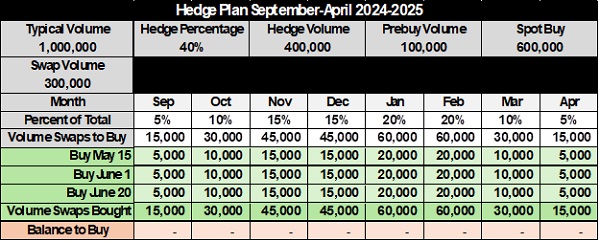In the Know: Autogas
In the Know is a monthly partnership between LP Gas magazine and Propane Resources. Our focus this month is on autogas, addressed by Obie Dixon, supply and risk management specialist.
 Q: Why is now the time for propane industry companies to embrace a more widespread adoption of autogas within their own fleets?
Q: Why is now the time for propane industry companies to embrace a more widespread adoption of autogas within their own fleets?
A: Good question! A better question might be, “Why hasn’t the industry embraced a more widespread adoption of autogas before now?” There are many factors. Let’s take a closer look at a couple of factors: performance and reliability.
Wouldn’t it be logical to use a fuel that is cheap and plentiful, keeps engines clean and is environmentally friendly, especially for companies in our industry? Options for using autogas range from converting existing engines to run on propane, propane injection and purchasing propane-powered vehicles from a manufacturer.
Several manufacturers have produced autogas vehicles in the past. Historically these vehicles were not widely embraced because of issues with performance and reliability. Propane can be cheap and plentiful, but if the vehicles are not reliable it becomes a moot point.
For obvious reasons, manufacturers have begun focusing more on autogas. It is clean; there are tax benefits; pricing is competitive; and propane is readily available. There are more than a half-dozen manufacturers producing conversion kits designed for specific engines. In the past when a conversion kit was installed, it was covered by a separate warranty and could turn into a hassle if a claim was filed. But now they’re installed prior to delivery so the buyer receives a new vehicle covered by a “manufacturer’s warranty.”
Instead of speculating on the question above, why not go directly to the source? We talked to several companies using autogas in their fleets. This is what we asked:
■ Do you know how long the propane bobtail engine will operate vs. diesel?
■ Where do you go to get work done on propane-powered bobtails when they break down?
■ What is the cost of a diesel-powered bobtail vs. one running on propane?
■ Does the terrain impact how well the propane bobtail works?
■ Is 100 percent of your bobtail fleet running on autogas, and if not, why not?
The overall impression of these retailers is that autogas has come a long way but still has a few obstacles to overcome.
Troy Hicks, business development manager at Northwest Propane in Carrollton, Texas, runs 100 percent of the company’s bobtail fleet on propane. However, Northwest Propane’s transports are all diesel. The diesel transports are needed for long-range runs and power, Hicks adds.
Shawn Treat, regional manager at Mountain Country Propane in Branson, Missouri, agrees with Hicks when it comes to his transports. The power of the diesel Class 8 tractors is needed.
Everyone agreed that the dealers where the propane-powered bobtails were purchased have been capable of handling service and warranty issues. Service is the biggest issue encountered by some of the older hybrid propane engines. Treat says this is a problem that you just learn to work around and hopefully find a mechanic who is familiar with propane engines.
Lee Garrett of Dallas County Propane in Buffalo, Missouri, has been running a Freightliner S2G propane bobtail and absolutely loves it. He has had no issues, but he is confident if he does, the Freightliner dealer will take care of his needs.
All agreed that the economics of running a propane-powered bobtail is a no-brainer. Since switching over to a 100 percent autogas-powered bobtail fleet, Northwest Propane’s experience is that maintenance needs and costs are reduced when compared to diesel counterparts, Hicks adds. Not having to deal with the hassle and expense of diesel exhaust fluid and particulate filter cleaning and changing is a benefit of autogas over diesel for Hicks.
According to the companies, driving terrains and conditions were not an issue for the autogas bobtails. Garrett constantly deals with steep grades and changing terrains in southern Missouri, and he has not experienced any challenges with the terrain.
Economics always plays a role in purchasing. Propane-powered bobtails cost more, but as Hicks says, “With the federal autogas tax incentive along with the lower cost of propane, there was no consideration to purchase anything else.”
When asked why he isn’t running 100 percent of his bobtail fleet on autogas, Garrett says it’s a matter of economics, but long-term purchasing plans will definitely include moving toward a fleet run entirely on autogas.
All signs point toward embracing a widespread adoption of autogas for fleets. Offerings of dependable and affordable autogas bobtails have shown big improvements over the past few years and will only continue to improve from both a mechanical and economic standpoint. Retailers must assess their own needs and resources. Converting a fleet from 100 percent diesel to 100 percent autogas overnight may not be logistically or economically practical. But our business is propane and ignoring the benefits of an autogas-powered fleet is probably not real logical, either.
Obie Dixon specializes in supply and risk management for Propane Resources. He can be reached at 888-739-6732 or obie@propaneresources.com.
















